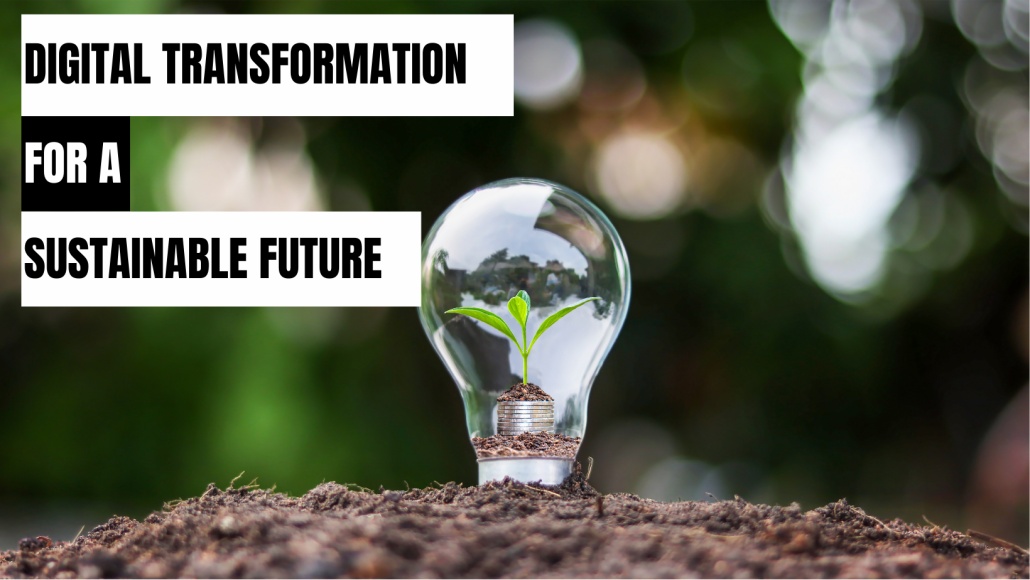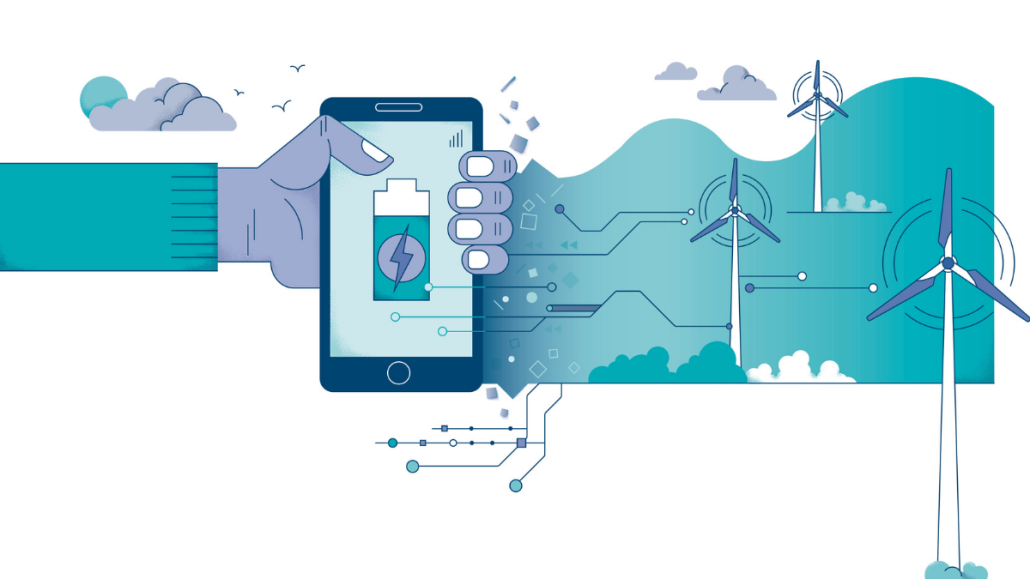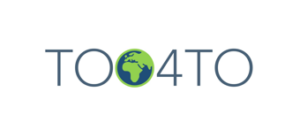Digital Transformation for Sustainable Future

“Using our know-how today to make tomorrow’s world a better place is at the heart of what we do. Product by product, service by service, line by line of code, we’re decoding tomorrow.” – Stefan Hartung (Chairman of the Board of Management, Bosch)
The world has never witnessed an age where the demand for energy production showed a negative trend. This ever-increasing need for energy directly conflicts with the need to combat climate change. It’s a problem that the governments, industries, NGOs, academia and the general public have been debating for years. To solve these crucial sustainability-related challenges, there are a growing number of new devices. While digital transformation continues to be a trend that provides many such devices, we are also at an age where the transformation extends further. In the process of digital transformation, businesses have realized that sustainability has to be a core part of digital transformation. With the proliferation of AI, it is just a matter of time when Digital Transformation becomes only a small cog in the larger machinery of AI. We may need to wait to see how AI evolves, but for now, we focus on software approaches to digital technologies helping in tackling the energy demand.
In this blog, we attempt to highlight a) the software approach taken in various industries and how cooperation between companies and regulators can help, and b) some of the tools that could be of help to sustainability enthusiasts that could solve not just some aspects of energy consumption but also other areas of sustainability.
Software approach
One direct way of visualizing how digital technology addresses energy demand is by leveraging data and software that makes energy usage more efficient. This utilizes the underlying data and allows companies to reinvent their processes in a way that is more energy efficient. Here are some highlights of how digital transformation resulted in and can further result in energy efficiency across sectors as per the research report by the International Energy Agency (Digitalization and Energy, 2017):
- The oil and gas companies, which are the core energy sectors, deployed digital technologies starting much earlier from the point of view of automation, safety and efficiency. Some with the objective of energy efficiency also. This has resulted in companies reducing energy and water consumption in their businesses (e.g. hydration control in the precast industry).
Exploration and production, which are the most profitable parts of the oil and gas sector, is where digital technologies tend to have a larger impact. The underlying software analyses and processes extremely large datasets that helps remote operations maximize oil and gas recovery. In future, usage of such data could also be extended to reduce delays in operations.
The sector lends itself to challenges while implementing digital technologies. The approach had always been risk-averse and delayed adopting digital technologies. The capital-intensive nature of the industry could have contributed to the risk aversion. The industry is yet to find management approaches that can enable faster adoption of digital technologies.
- The transport sector, which accounts for 28% of the global demand for energy, by implementing automated, connected, electric and shared (ACES) shapes the future energy consumption pattern of the overall transport sector. The flip side is, the increased energy efficiency and reduced energy consumption brought by automation increases activity levels, which offsets all the gains.
From the future point of view, there are some barriers and risks the government and regulators need to address. Initiatives such as the European union’s cooperation with member states, automakers, telecom companies to permit cross-border travel of automated vehicles will ensure interoperability. In road freight, the government can promote the reporting of aggregated information by sharing the data of assets and services across the supply chain, which will improve freight logistics.
- In buildings, smart energy management systems can reduce overall energy use, by consuming energy only when required, by implementing digital solutions. Such solutions can predict user behaviour and can auto program heating and cooling systems, reduce peak loads, shed loads, store energy on a real-time basis. Measuring and monitoring real-time energy performance allows the prediction and identification of maintenance requirements. Homes have become smarter by connecting household items to devices that save energy.
While the potentials and opportunities are immense, there are also obstacles in the path to realising the benefits of digital transformation in buildings. Much needed is the cooperation between the policymakers and companies to allow interoperability across technologies, which is to enable sharing of information through open source and compatible software. Innovative tariffs can be devised that could motivate end users to adopt digital technologies. Combined effort by the government and private to communicate the benefits of digitalization in comfort and cost savings.
- In the power sector, given the increasing role of renewable energy, the deployment of digital technologies will increase the share of various renewables. The potential benefits of digitalization is by exploiting data that is already being collected through various sensors. Such digital data analytics can reduce power system costs by reducing operations and maintenance (O&M) costs, improving plant network efficiency, reducing downtime & outages and increasing asset operational lifetime.
While barriers are fewer in the power sector, it still needs closer attention. The regulated markets provide financial incentives, but only for the investment in physical assets. Investment in digital technologies is not incentivized. The sector representatives working closer with the regulators will help remove such barriers.
- The information and communication technologies (ICT) sector has emerged as one of the largest consumers of energy. This comprises data centers, data networks and connected devices. Data centers and data networks account for 2% (as of 2014) of global energy demand. With more than 20 billion devices connected through the Internet of Things (IoT) and another 6 billion smartphones connected online, the energy consumption of devices is underestimated. Similar to the transport sector, energy efficiency is offset by increasing levels of activity and adding more devices to the sector. Interesting enough, the solutions to the energy demands in the ICT industry are not software-driven but policy-driven.
From the futuristic point of view, government policies can play a role in, a) regulations to ensure more efficient devices, b) incentives for more efficient and sustainable manufacturing practices, data center operations, data transfer networks, and c) improved central data systems.

Similar examples of digital solutions driven through software approaches can be outlined for many other sectors. However, the above examples give us an indication of the extent of what is possible through a software approach and what more can be done with continuing cooperation between the government and the private.
Taking a cue from Digital Transformation Network’s report, some measures to achieve the ambitious goals could be closing the software job gaps and modernizing government IT and digitizing public services in order to have an extended impact on energy consumption.
- Close the software jobs gap. More software professionals are trained to design and run transformative software-enabled tools, such as a) power the energy grids, b) data analytics in the power sector, c) ACES in the transportation sector and so on. Specific suggestions such as upgrading the outdated (electric) grids would have direct benefits for the power sector. However, integrating aspects of transformation through a software approach across industries is what is of interest to this article. Hence, closing the gap in software jobs between professionals trained to design and run transformative software-enabled tools, plays a key role.
- Modernize government IT and digitize public services. One of the consistent barriers that we noticed across all sectors while analysing the approach to better uptake of digital solutions is the need for regulatory reforms. Such reforms need central data systems with the Government and cross-border cooperation. This is where governments need modernizing. The need for the IT backbone and digitalized public services is essential for fast and informed decision-making. What is already implemented in the private sector is not widely adapted and implemented by government enterprises. Such implementation needs to be accelerated.
Other sustainability tools for the economy, energy, environment
As a closing thought, we refer to some specific tools compiled by the United States Environment Protection Agency, which could be of use while implementing digital solutions to tackle energy demands. This agency has listed more than 60 tools and resources to help various stakeholders, which are grouped into 10 different categories. The various groups are, i) Sustainable Manufacturing, ii) Lifecycle Assessment, iii) Energy Efficiency, iv) Carbon Footprint, v) Materials Management, vi) Community Development, vii) Worker Safety, viii) Workforce Development, ix) Manufacturing Industry and x) Funding & other tools.
With the ever-increasing emphasis on sustainability, the voices are growing louder to fast-track solutions that can minimize the negative impacts. Digital solutions with a software approach may not have been the most intuitive way to combat the crisis of climate, but we can witness from the use cases that many inroads have been made. Also, we could see the potential for improvement, furthermore. The impact will be visible when the government, companies and the general public also integrate seamlessly with the digital transformation.
Written by G.Vanna Vadivan, Global Impact Grid
References
Digital Transformation Network, “Digital Tools for a Sustainable Future”, https://www.dxnetwork.org/downloads/04252022dtnsustainability.pdf
O’Hanlon, Paul & Delaplace, Arnaud (2022), “Digital tools to build a sustainable future”, https://www.cpi-worldwide.com/en/news/67067/news-2205-digital-tools-to-build-a-sustainable-future
European Commission (2022), “Digital Services Act”, https://ec.europa.eu/commission/presscorner/detail/en/ip_22_2545
Emma, Woollacott (2021), “How to make your digital transformation sustainable”, https://www.raconteur.net/sustainability/digital-transformation-sustainable/
Nettesheim, Kajja (2019), “Digital business transformation”, https://www.bosch.com/stories/digital-business-transformation/
United States Environment Protection Agency, “E3 Sustainability Tools”, https://www.epa.gov/e3/e3-sustainability-tools
International Energy Agency (2017), “Digitalization and Energy”, https://iea.blob.core.windows.net/assets/b1e6600c-4e40-4d9c-809d-1d1724c763d5/DigitalizationandEnergy3.pdf
European Commission, https://digital-strategy.ec.europa.eu/en/policies/connected-and-automated-mobility


